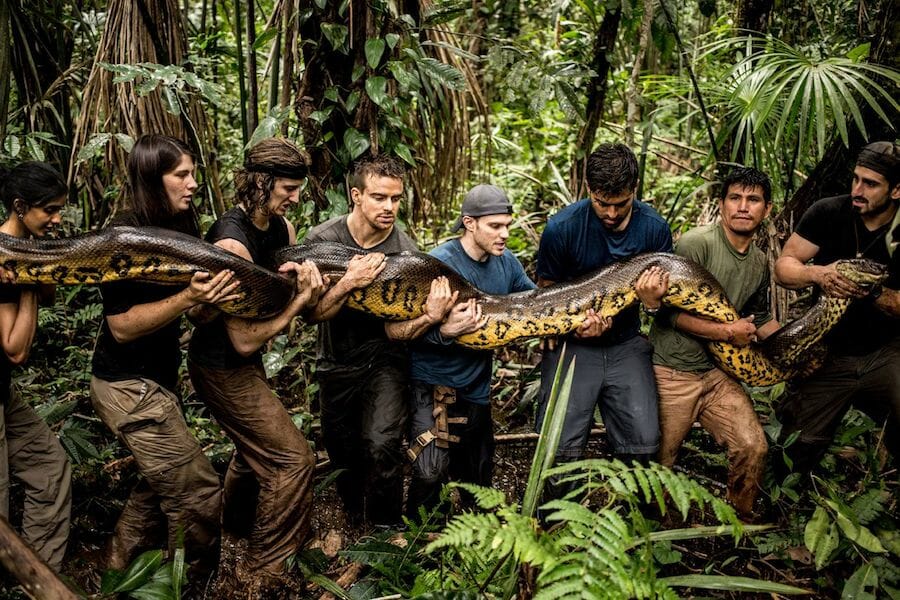Anaconda, the heavyweight of snakes, can reach up to 30 feet long and weigh more than 300 pounds. They can grow up to the length of a school bus. Anacondas have majorly four large species. But the most commonly known Anaconda is the Green Anaconda, as it is the largest of the species.
Anacondas are excellent swimmers, which makes them the most lethal predators in the water. To support its heavy bodyweight and also for mobility purposes, Anacondas spend almost all of their time in and around water. This snake usually waits to ambush as soon as its prey comes near it as it camouflages itself in the water to be stealthy.
Anacondas remain almost completely submerged in the water as the eyes and the nostrils are positioned on the upper portion of the head that helps it see and breathe.
Must check– Can we keep Anaconda as a pet?
How does an Anaconda hunt?
One of the lesser-known facts about Anacondas is that they are not venomous. However, they are constrictors. As they are not toxic, they coil around its prey, constricting tighter and tighter until the supply of the blood in the body is cut off.
Constrictor snakes like python or Anacondas can sense when the heartbeat of its prey has stopped. Once they ascertain that the victim is dead, they start gulping the meal as a whole. Despite their large body, Anacondas also have stretchy ligaments and mobile joints in their mouth, which helps them mouthing their dead prey in whole just like most of the snakes.
Also Read– Largest Size Anaconda ever
Anacondas eat their prey as a whole, due to which it cannot breathe as it normally would. When the Anaconda is consuming its prey, the windpipe gets pushed up and out of the mouth, which works like a snorkel, allowing the Anaconda to breathe.
What are the predators of an Anaconda?
Anacondas are one of the most lethal and dangerous predators in the world. Due to there colossal body size and hunting instincts, the Anacondas don’t have any natural predators. However, the only natural predator to Anacondas is humans.
But occasionally, some of the prey such as a jaguar or a giant Caiman might kill Anacondas in its hunting encounters. Other than this, the only known predator to Anacondas is Humans.

Do Anacondas think of size before suffocating their prey?
The Anacondas are natural apex predators; they are born with survival and hunting instincts the moment they are born. Unlike other snakes, the Green Anaconda does not lay eggs, the eggs are hatched inside of female Anaconda, and the mother further gives live births.
As Anacondas don’t have any natural predators, the Anaconda don’t usually feel vulnerable in the presence of other animals except for the Humans. Due to which it makes them, apex predators of nature.
Anacondas can constrict large animals such as rodents and even Jaguars. With such colossal body size and lethal hunting skills, Anacondas don’t think of size before suffocating their prey. However, as instincts, they don’t hunt enormous animals that they cannot swallow in one go, such as adult elephants, bears, and such. So, Anacondas don’t usually think of size before suffocating their prey. However, they do have an instinct and don’t hunt animals that it cannot swallow.
With no natural prey, the only real predators to this humongous species of snake are Humans. Therefore, they don’t feel endangered by other animals, so it does not think about the size before suffocating their prey.
Due to its hunt-and-kill nature, Anacondas are hands down, the apex predators.

